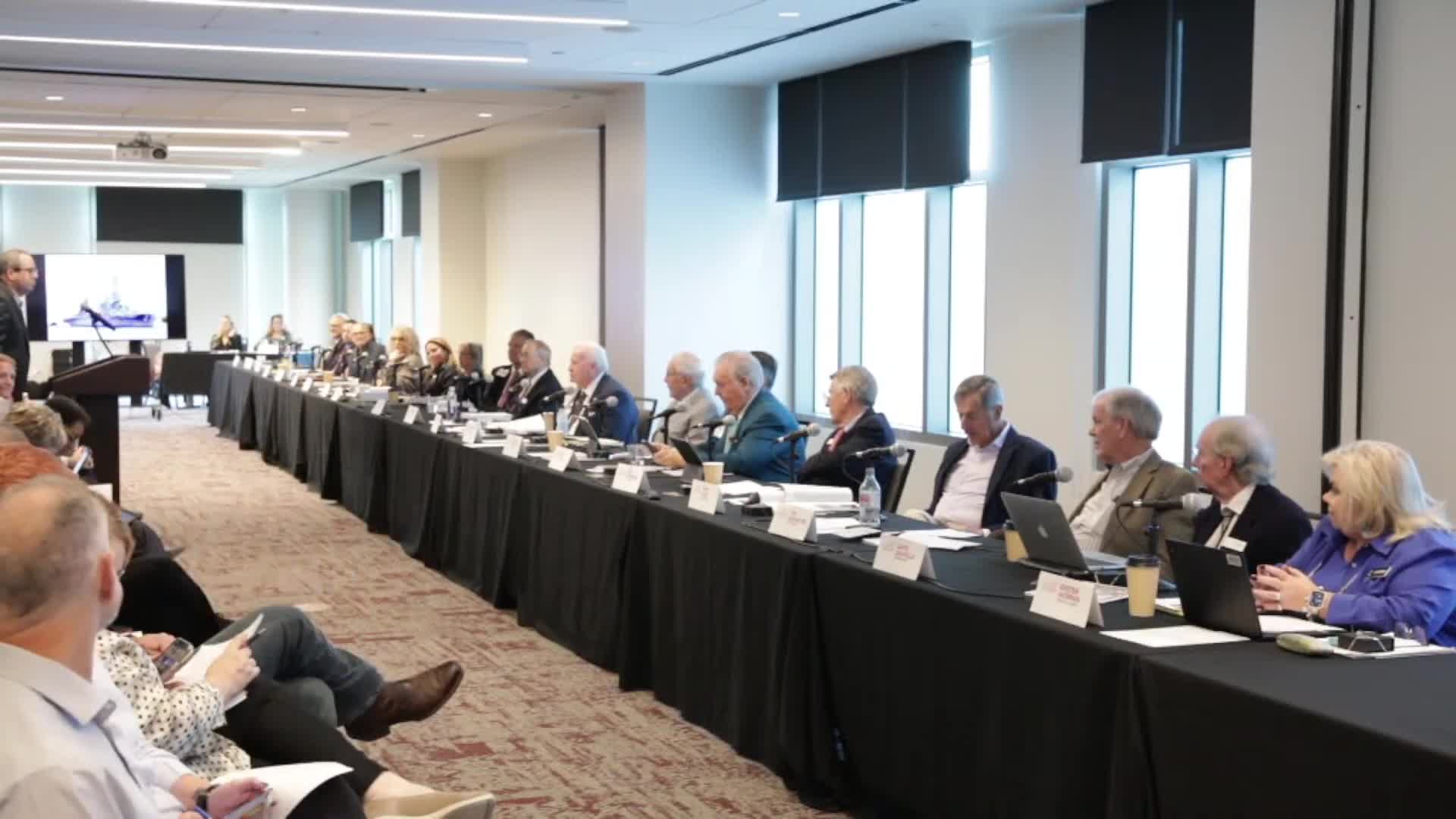Battleship Texas restoration: hull, blister tanks and plans for new Galveston berth move forward
November 08, 2025 | Historical Commission (THC), Departments and Agencies, Executive, Texas
This article was created by AI summarizing key points discussed. AI makes mistakes, so for full details and context, please refer to the video of the full meeting. Please report any errors so we can fix them. Report an error »

Travis Davis, vice president of ship operations for the Battleship Texas Foundation, updated the commission on the vessel�tow, hull repairs and the foundation��s plan to move the ship to a protected slip at Pier 15 in Galveston.
Davis said the tow to Galveston was executed without significant water intrusion, that previously installed expanded foam and temporary access points have been removed, and that the hull work included replacement of blister tanks and substantial new steel plating (he said roughly 800 tons of steel and new plating on about 70% of the wetted surface). The blister tanks, originally thin and lightly framed, were described as severely deteriorated and were rebuilt in modular sections; Davis said the original blister shell was about one-half inch steel and the original framing was thin and inadequate after decades of water exposure. He said the foundation replaced and strengthened framing and used a larger anode/cathodic protection plan than previously installed.
Davis said the team restored and reinstalled six 5-inch guns, rebuilt reproduction secondary equipment and restored superstructure elements. He said the ship's preservation work exceeded the scale of repairs done in 1988 and that the program included extensive reproduction of in-kind components.
Looking ahead, Davis said the foundation is preparing permit applications to move the ship from the shipyard to a new Galveston berth (Pier 15), and for improvements supporting public access and modern visitor amenities, including upgraded restrooms and accessibility improvements designed to retain historic character while allowing public use. He said the selected Pier 15 position is in a protected slip outside the main ship channel, which the Port of Galveston supports as part of a planned waterfront redevelopment and that the mooring design will be engineered to survive 160 mph winds and a 19-foot storm surge. He described an impressed-current cathodic protection system with roughly 48 anodes planned (significantly larger than the small array previously in place) and said anode replacement will be part of long-term upkeep.
On operations and revenue, Davis said feasibility work shows significantly higher attendance potential at Galveston (his cited estimate ranged from 225,000 to 385,000 paying visitors per year) and that revenue plans include increased ticketing and visitor services. He said the foundation anticipates applying for additional permits in January for the move and for interior visitor-amenity work, and that they will continue consulting with the THC and Port of Galveston on environmental and preservation requirements.
Commissioners asked technical questions about blister thickness, anode systems and long-term revenue projections; Davis and foundation staff provided technical answers and said the project team will submit formal permit applications and documentation to THC staff for review.
Davis said the tow to Galveston was executed without significant water intrusion, that previously installed expanded foam and temporary access points have been removed, and that the hull work included replacement of blister tanks and substantial new steel plating (he said roughly 800 tons of steel and new plating on about 70% of the wetted surface). The blister tanks, originally thin and lightly framed, were described as severely deteriorated and were rebuilt in modular sections; Davis said the original blister shell was about one-half inch steel and the original framing was thin and inadequate after decades of water exposure. He said the foundation replaced and strengthened framing and used a larger anode/cathodic protection plan than previously installed.
Davis said the team restored and reinstalled six 5-inch guns, rebuilt reproduction secondary equipment and restored superstructure elements. He said the ship's preservation work exceeded the scale of repairs done in 1988 and that the program included extensive reproduction of in-kind components.
Looking ahead, Davis said the foundation is preparing permit applications to move the ship from the shipyard to a new Galveston berth (Pier 15), and for improvements supporting public access and modern visitor amenities, including upgraded restrooms and accessibility improvements designed to retain historic character while allowing public use. He said the selected Pier 15 position is in a protected slip outside the main ship channel, which the Port of Galveston supports as part of a planned waterfront redevelopment and that the mooring design will be engineered to survive 160 mph winds and a 19-foot storm surge. He described an impressed-current cathodic protection system with roughly 48 anodes planned (significantly larger than the small array previously in place) and said anode replacement will be part of long-term upkeep.
On operations and revenue, Davis said feasibility work shows significantly higher attendance potential at Galveston (his cited estimate ranged from 225,000 to 385,000 paying visitors per year) and that revenue plans include increased ticketing and visitor services. He said the foundation anticipates applying for additional permits in January for the move and for interior visitor-amenity work, and that they will continue consulting with the THC and Port of Galveston on environmental and preservation requirements.
Commissioners asked technical questions about blister thickness, anode systems and long-term revenue projections; Davis and foundation staff provided technical answers and said the project team will submit formal permit applications and documentation to THC staff for review.
View full meeting
This article is based on a recent meeting—watch the full video and explore the complete transcript for deeper insights into the discussion.
View full meeting
